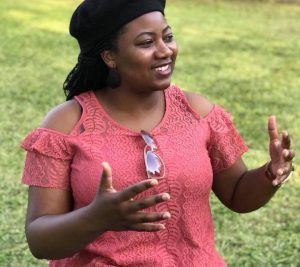Tendai Biti and his five fellow MDC colleagues that were arrested on 5 June 2020. Credit: MDC Alliance.
A week is a long time in President Emmerson Mnangangwa’s Zimbabwe.
On Friday 5 June, I led a group of opposition MDC-Alliance leaders to our party headquarters in Harare. We were not armed, we were peaceful, and we had no other intention than to reclaim our offices, which had been taken over by security forces in the name of a fake “MDC” faction they control. For this, we were arrested and spent a day in prison before being charged and released on bail.
This is part of a steady and hastening trend towards failure in Zimbabwe. This event should remind the international community and southern African region that the ruling ZANU-PF is not a reformist government. They should not ease up pressure on Harare to adhere to democratic standards.
Since the military coup in November 2017, Mnangagwa’s ZANU-PF has taken Zimbabwe to new and unprecedented depths of collapse, capture and coercion. In under two years, Zimbabwe has backslid into a comatose, tin-pot republic dominated by massive economic mismanagement. Unemployment is sky high and the inflation rate is over 700%.
At the centre of Mnangagwa‘s failed economics, are two things. The first is the inability of the government to live within its own means. Billions have been spent outside the budget leading to huge deficits that have forced the Central Bank to print money to cover the gap. The second is the government’s mismanagement of the exchange rate. In 2019, the government prematurely introduced its own currency. Without sound economic fundamentals to back it up, the New Zimbabwean Dollar collapsed resulting in serious market distortions and an explosion in black market activities.
In the shops, basic commodities are in short supply, particularly sugar, cooking fat and the country’s staple mealie-meal. Fuel queues snake for kilometres. There have been incessant power cuts lasting up to 18 hours, particularly before Zimbabwe imposed its COVID- 19 lockdown at the end of March.
As the economy implodes, Mnangawgwa and his lot are presiding over the most corrupt and extractive period since Zimbabwe’s independence 40 years ago. Billions of dollars are siphoned off from the state, in vehicles and companies linked to Mnangangwa, his family and business associates.
Even as the lives of average Zimbabweans turn to dust, the elite continues to milk the system through their control of foreign exchange and money supply, agricultural subsidies (which they call “command agriculture”), fuel procurement, the mining of commodities (such as diamonds, platinum, chrome and gold), and public sector procurement.
A violent regime
Mnangagwa’s human rights record is an even worse disaster and should motivate all democrats to stand shoulder to shoulder with Zimbabwe’s opposition. We already knew of his dark past at the centre of the 1980s Gukurahundi genocide, which saw the murder of more than 20,000 people in the southern and south-western parts of the country. But in the wake of the 2018 general election, the world was reminded of his ruthlessness when eight protestors in Harare were shot dead by the military in broad daylight.
In January 2019, soldiers killed 19 people following protests against massive hikes in fuel prices. During that same period, women were raped, many homes were torched and some 600 people were arrested. Amnesty International observed: “Authorities routinely suppressed the rights to freedom of association and peaceful assembly, using lethal and excessive force to disperse peaceful demonstrations.”
In August 2019, following the MDC’s threats to hold a protest, 42 activists were abducted. In October, a young vendor, Hilton Tafadzwa Tamangani, was tortured by the police and died in a remand prison.
The abuses come thick and fast, and with a level of dehumanisation and violence that has become ZANU-PF’s hallmark. Just three weeks ago, three female activists – Joanna Mamombe, Cecilia Chimbiri, and Netsai Marowa – were abducted , tortured and sexually abused by state security agents following their participation in a street protest. Among the methods of torture used was the shoving of gun barrels into the girls’ bodies and forced consumption of each other’s urine and faeces.
The opposition continues to struggle on, in spite of the risks and intimidation.
Most recently, ZANU-PF – craving the flow of international funds that recognition of Zimbabwe’s “democracy” could bring – has attempted to use a curious court judgement to hatch a Trojan Horse within the MDC-Alliance, forcing us to hand over the leadership of the party to a rival that contested against us, and lost, in the 2018 general election. As if that was not enough, on 3 June 2020, the military physically seized our party’s head office, Morgan Richard Tsvangirai House, and physically handed control of the premises to the rival beneficiaries.
My mission last Friday was to gain access to our own building. Here’s what happened.
My arrest
At first, the police were polite and civil. Then our group began singing a popular liberation song. Without warning, we were arrested, bundled into a police truck and ferried to Harare Central Police Station. No restraint was exercised. The police were particularly rough with my colleagues David Chimhini, a 70-year old senator, and Lovemore Chinoputsa, who kept demanding to know why we were being arrested.
At Harare Central Police Station, we saw the grisly intestines of state failure under ZANU-PF‘s 40 years of misrule. We were placed in a tiny room, replete with a broken ceiling and chairs, an old Remington typewriter fit for a museum, and tattered police uniforms hanging from the door. It was like a scene from a bad Western.
We waited hours before Superintendent Majongosi arrived to record our details. We stayed several more hours during which no food was offered despite Senator Chimiinhi explaining that he is diabetic and suffers from hypertension. When our lawyers arrived, they insisted that we be released. The police kept saying the matter was not in their hands and that they were consulting, which we took as a euphemism that they were seeking directives from the president’s office.
Around 8 o’clock, we were transferred. In our new holding room, other prisoners were present, including policeman Shungudzemoyo Kache, who had been charged with sedition for allegedly calling Mnangangwa “a used condom”. MDC-Alliance activist Womberai Nhende lay on the dilapidated floor with huge gashes on his leg from being assaulted by the police. He was shivering and struggling to breathe but they did not care. No medical attention was offered until our lawyers insisted he be taken to a hospital.
Later that evening, charges were formally laid against us. We were accused of having committed a criminal nuisance by disturbing the peace and singing a song on Nelson Mandela Avenue. Although such a petty crime is usually resolved by paying a fine, the police proceeded to take our fingerprints. Without the necessary basic equipment, they poured ink on a kitchen sponge. We were squeezed into two little offices by an army of police detectives who behaved as if we had just bombed the twin towers.
The process was long, tortuous and ran into the night. A decision was then taken to detain us until the next morning. We were bundled downstairs where we found ourselves in a room with hundreds of other prisoners. Most had been arrested for not wearing masks and hadn’t been able to pay the fines. Yet to heap irony on the ridiculous, there was no social distancing, temperature checks or sanitisers provided then or at any point that day.
Later, we were taken to the actual cells and forced to surrender our belongings. We were not provided blankets or mats on which to sleep. The toilets were stuffed with torn copies of The Herald, the state-owned newspaper, for which there is no better use. There was no water and we were forced to walk in filth without shoes.
In the morning, my poor mother and brother were allowed in. It pained me to see my mother had been crying all night and had hardly slept. Around 10am, we were taken to Harare Magistrate Court where hundreds of our supporters were outnumbered by riot police and soldiers. Our lawyers had been waiting, having been told the previous night that our hearings would begin at 8:30am. We waited another hour or so before we were told that there was no senior prosecutor present to handle our case, notwithstanding the minor nature of the charge. Without explanation, we were driven back to Harare Central Prison. It was farcical and surreal like a poorly scripted Mr Bean film without the comedy.
Back at the prison, a very apologetic policeman told us they’d been instructed to add more serious charges against us. We were presented with new statements which we refused to sign. Well into the afternoon, we were then taken back to court. Through our lawyers we made complaints against the manner of our arrest, the delays, and the unhealthy conditions we were exposed to. The magistrate ordered an inquiry. We were granted bail of a thousand dollars each.
We were so grateful when bail was posted and the six of us left prison with nothing but our freedom. We were dirty, hungry, and had been physically and mentally tortured, but we were relieved. Because despite our terrible experience, we were the lucky ones. Many have died. Many have been tortured. And many are fearful they will become victims of this dysfunctional, anti-democratic state.
My appeal to the world is to acknowledge our experience and that of so many in Zimbabwe, and to recognise that the lives of black Zimbabweans matter.
Post published in: Featured














 Jordan Rothman is a partner of
Jordan Rothman is a partner of 





